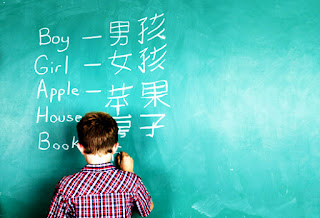Raising a bilingual child is not so easy. However, things become
easier when the parents speak in two different languages. For example, a child
may have parents belonging to two language groups or nationalities. The father
may speak Chinese very fluently while the mother may be very vocal in French.
The child that grows in such a home gets all the best opportunities to speak in
both languages. However, the dominant language that the child learns to speak
will be the mother's tongue. This is because of the proximity of the child with
his or her mother. In fact, the mother will nurture her child for more than 8
years almost on her lap. This proximity may compel the child to learn his or her
mother's language more than the father's.
Whatever the case, teaching your children two languages is still
very difficult. You may never teach it intentionally and you do not teach with a
definite purpose. Learning language comes automatically to children. However,
teaching two languages takes some time and effort. In addition, children will
learn language effortlessly when parents give them enough time and exposure to
the language. There are two types of bilingualism at home:
The first one is the simultaneous learning of two different
languages at home that is affected by four important issues:
-
At time, patents may speak in just one language, which is usually the language that is spoken at the home. These parents may not be able to speak in the language that the school or the community speaks.
-
Are the parents using the language that they speak with their children? Usually, parents may make decision as to which language they would be using at their home.
-
In some homes, grandparents may speak entirely a different language that might make things difficult for the parents.
-
The language spoken in the community is yet another factor that influences the language that your child will learn in the future. For example, in Canada, the major language spoken in some areas of the country is French and children usually learn it faster than other languages spoken at home. In fact, children living in such areas may even learn to speak three languages! One is definitely French, the second is English, while the third could be a different language spoken by one or two of the parents.
The second class of bilingualism is the successive bilingualism.
This occurs when the child learns one language first and become proficient in it
before learning the second language either at the school or in the community.
This phase occurs when the child is about four years old and in many cases, the
new language is acquired within the school, where the child attends the language
class.



No comments:
Post a Comment